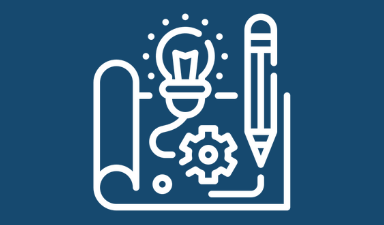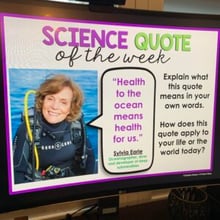Watershed and Human Impact Activities
for Middle School Science
The resources below will provide students a comprehensive understanding of watershed and human impact. All of the following lessons are also included in the Kesler Science Membership.
The Watershed and Human Impact 5E Lesson includes materials for every "E" phase, including the Watershed and Human Impact Station Lab for Exploration and an interactive PowerPoint with digital INB templates for Explanation.
The lesson also includes introduction materials for Engagement, student-choice project ideas for Elaboration, and assessments for Evaluation.
After completing the Watershed and Human Impact 5E Lesson, students will be able to tell the difference between freshwater and saltwater, name examples of surface and groundwater, identify an aquifer, identify the differences between types of water pollution, and explain how water can be conserved.
The Watershed and Human Impact Inquiry Lab is a hands-on activity that is differentiated for advanced, on-level, and modified middle school students.
Watershed: In this lab, students will model how livestock activity impacts surface water and groundwater in a watershed.
Human Impact: Students will be able to determine the impact that humans have had on Earth through a cookie mining activity. They will use an internet site to answer questions on human’s impact on the environment.
The Watershed and Human Impact Inquiry Lab includes a brief reading passage, comprehension checks, hands-on activities, reflection questions, and
a CER conclusion.
Watershed and Human Impact Classroom Experiences
Create a powerful student experience to help solidify students' understanding about watershed and human impact. The following experience is also included in the Kesler Science Membership.
STEM CHALLENGES
The Project, Clean It Up - Create a Water Purifier STEM Challenge uses the engineering design process to come up with a working prototype of a water purification system. Students must be able to take a bottle of unclean water and purify it so that someone could drink it.
Students will be using collaborative skills such as brainstorming with their peers and reflecting on their progress during the project.
At the end of the Project, Clean It Up - Create a Water Purifier, STEM challenge, students are given an opportunity to share their projects outside of the classroom.
Year-Round Resources
These year-round activities will increase your students' understanding of many middle school science topics. All of these activities are also included in the Kesler Science Membership.
Visual Data & Graphing
You're not alone if your students struggle with understanding graphs, charts, and tables. It's a skill that takes an enormous amount of practice. This resource will help students build a strong foundation in analyzing data and creating their own data visualizations.
Bell Ringers and Warm-Ups
These middle school science bell ringers are an excellent way to engage your students as soon as they walk into your classroom. This comprehensive FULL YEAR resource includes everything you need to start off each science class with an interesting warm-up activity.
Review Board Games
Each game board has been carefully designed to keep students engaged. There are 10 different action spaces on each board and dozens of question cards. All of the actions are related to science concepts and keep the students motivated throughout the game.
Each game is ready to play. Simply print out the board and the cards and let the students enjoy reviewing nine different units.
Essential Questions and Standards
Below are the essential questions and standards associated with the lessons and activities included in the watershed and human impact unit. This topic is only one of more than 100 middle school science topics included in the Kesler Science Membership.
-
What is the difference between fresh and saltwater?
-
What are examples of surface and groundwater?
-
What are the parts of an aquifer?
-
What are some different types of water pollution?
-
How can water be conserved?
-
MS ESS2-4 - Develop a model to describe the cycling of water through Earth’s systems driven by energy from the Sun and the force of gravity
-
MS ESS3-1 - Construct a scientific explanation based on evidence for how the uneven distributions of Earth’s mineral, energy, and groundwater resources are the result of past and current geoscience processes
-
TEKS Science 7.8 C - Model the effects of human activity on groundwater and surface water in a watershed
Kesler Science Membership
Imagine never having to search for another middle school science lesson again. The membership gives you access to ALL of the Kesler Science products in one place (Yes, including everything above).
Say goodbye to long hours of lesson prep.


